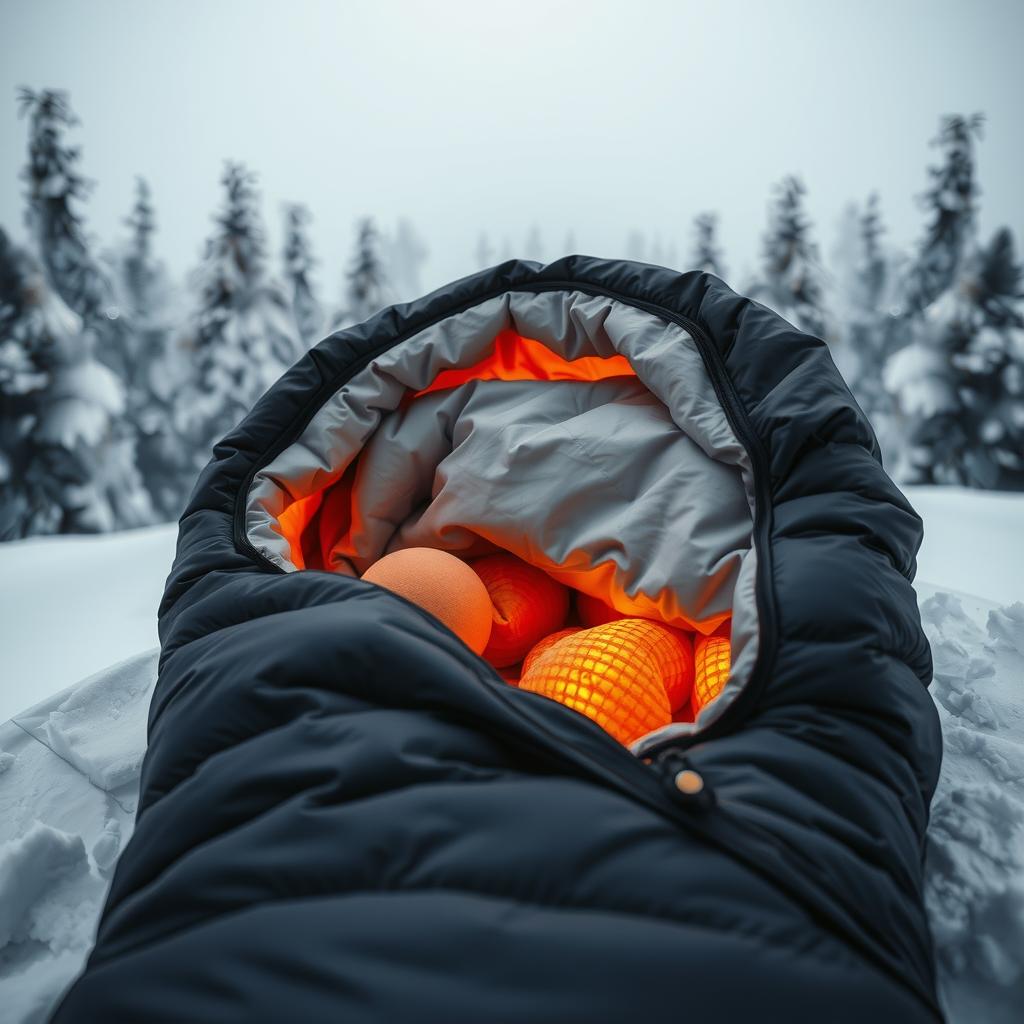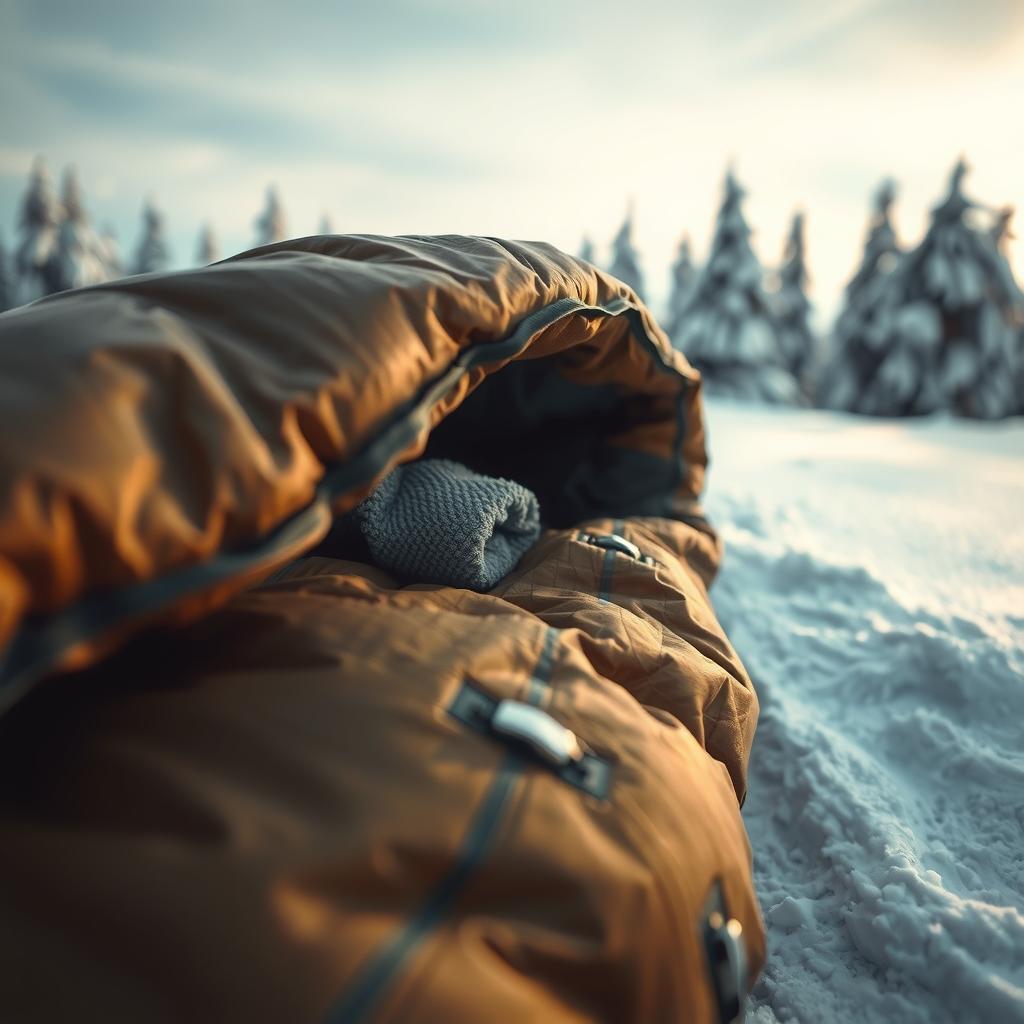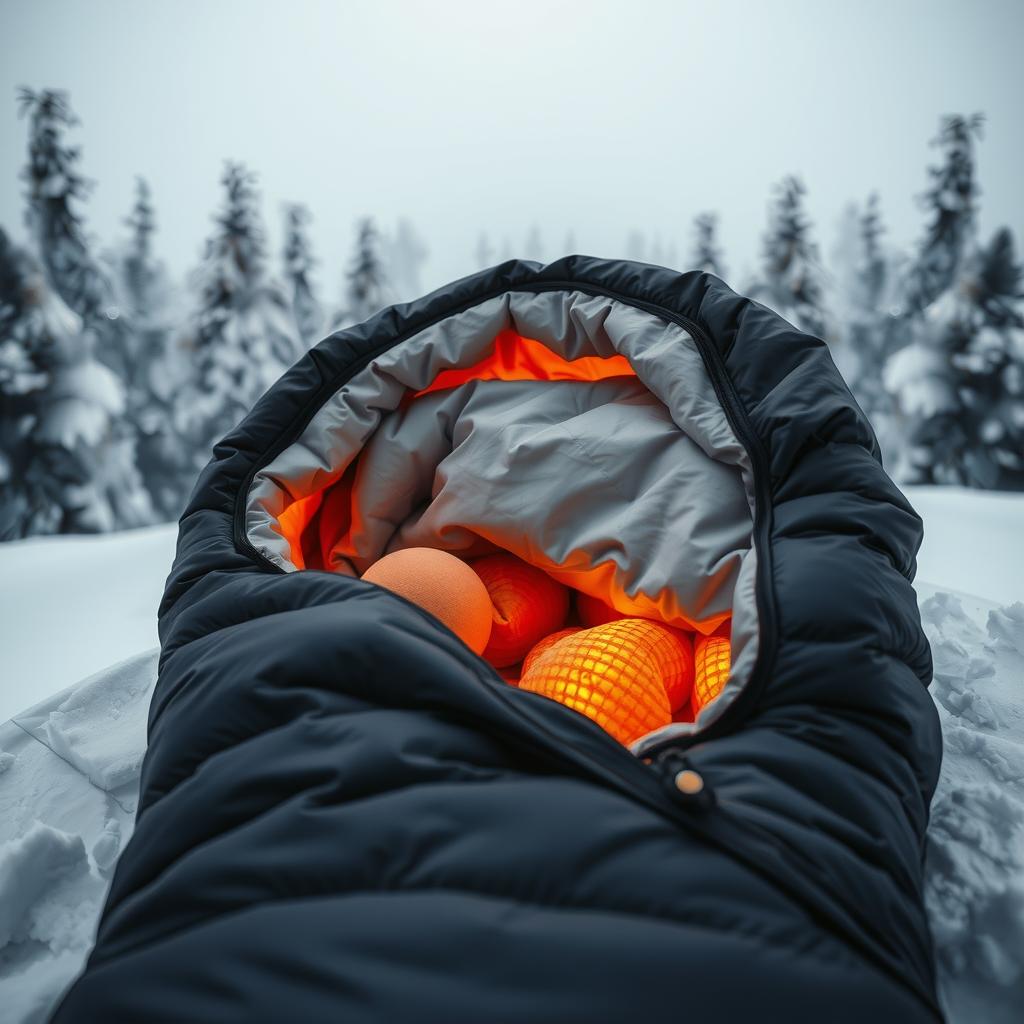When the temperatures plummet to extreme lows, the idea of venturing outdoors can seem daunting, if not downright impossible. Whether it’s an unexpected winter camping trip or a planned expedition into frigid wilderness, one essential piece of gear can make all the difference—the extreme cold weather sleeping bag. Designed specifically for those harsh conditions where nighttime temperatures reach as low as -20°F, this specialized sleeping bag offers unparalleled thermal protection and comfort. But what makes an extreme cold weather sleeping bag truly indispensable in such biting conditions?
As outdoor enthusiasts know well, staying warm is not merely about personal comfort—it’s also crucial for health and safety. Prolonged exposure to extreme temperatures without adequate insulation can lead to severe hypothermia and frostbite. This blog post aims to explore why investing in a high-quality extreme cold weather sleeping bag is vital for anyone who plans on spending nights outdoors during winter months. Readers will discover how these bags are engineered with advanced materials that provide optimal insulation while remaining lightweight and packable—a perfect balance for any adventurer.
Moreover, understanding the features that differentiate various models of cold weather gear, particularly when it comes to sleeping bags designed for extreme environments, will empower users to make informed choices tailored to their specific needs. From fill types such as down versus synthetic fibers to design elements like draft collars and hoods, every detail contributes significantly towards achieving ultimate warmth during your outdoor adventures.
By delving deeper into the world of outdoor insulation solutions available today—particularly focusing on the remarkable capabilities of an extreme cold weather sleeping bag—this article aims not only to inform but also inspire readers preparing for their next adventure in icy terrains. The insights shared here will serve as a guide through which they can enhance their winter camping experiences while ensuring safety against nature’s most formidable challenges.
So whether you’re gearing up for a solo trek or planning a family outing amidst snow-capped landscapes, understanding how an effective thermal solution like the extreme cold weather sleeping bag fits into your packing list could be pivotal in making your journey enjoyable—and safe! Join us as we explore ten critical aspects surrounding this essential piece of equipment that promises warmth even when faced with extreme temperatures.

Essential Considerations for Choosing an Extreme Cold Weather Sleeping Bag
When it comes to winter camping, the effectiveness of an extreme cold weather sleeping bag is fundamentally linked to its insulation capabilities. Campers must prioritize bags that utilize advanced materials designed specifically for thermal protection in harsh climates. These specialized sleeping bags not only retain body heat but also wick away moisture, ensuring a cozy and dry experience even in extreme temperatures. By selecting a bag with superior insulation technology, outdoor enthusiasts can significantly enhance their comfort during frigid nights.
Features That Enhance Warmth in Extreme Conditions
A well-designed extreme cold weather sleeping bag incorporates various features aimed at maximizing warmth retention. Among these are draft collars and insulated hoods which work together to minimize heat loss. When facing biting winds or sub-zero temperatures, these elements become essential components of effective cold weather gear. The thoughtful engineering behind such sleeping bags ensures that campers remain snugly warm throughout the night, allowing them to focus on enjoying their winter adventures rather than battling the chill.
Tips for Maximizing Comfort While Winter Camping
To fully benefit from an extreme cold weather sleeping bag, campers should consider layering techniques and proper campsite selection as part of their strategy for achieving optimal warmth. Utilizing additional blankets or liners can provide extra layers of insulation when needed. Furthermore, choosing a sheltered camping spot away from direct wind exposure will complement the protective features of a quality sleeping bag, enhancing overall comfort during outdoor excursions in extreme conditions. By combining these strategies with a reliable outdoor insulation solution like an extreme cold weather sleeping bag, adventurers can ensure restful sleep amid nature’s frosty embrace.

Essential Features of Extreme Cold Weather Sleeping Bags
Key Attributes for Comfort in Below-Freezing Conditions
When winter camping, the choice of an extreme cold weather sleeping bag can significantly impact a camper’s comfort and safety. These bags are designed with thermal protection in mind, typically featuring high-quality insulation materials like down or synthetic fibers that trap heat effectively. A crucial component is the temperature rating; it’s essential to select a sleeping bag rated for lower than the expected overnight temperatures to ensure warmth during extreme conditions. Additionally, features such as draft collars, hoods, and zipper baffles enhance insulation by minimizing cold air penetration. The shape of the bag also matters; mummy-shaped designs provide better heat retention compared to rectangular options by hugging the body closely.
Importance of Insulation Technology
How Advanced Materials Enhance Performance
The effectiveness of an extreme cold weather sleeping bag largely depends on its insulation technology. Modern outdoor insulation technologies utilize advanced synthetic materials that mimic down’s loftiness while maintaining performance when wet—a critical advantage in unpredictable winter weather. Moreover, many brands employ water-resistant coatings or treatments that help prevent moisture from compromising the sleeping bag’s insulating properties. This ensures campers remain warm even if snow or condensation occurs inside their tent. As a result, understanding these technical aspects allows enthusiasts to make informed choices about their cold weather gear.
Durability and Weather Resistance
Choosing Reliable Gear for Harsh Environments
Durability is another vital aspect when considering an extreme cold weather sleeping bag for winter camping trips. High-quality fabrics not only contribute to weight savings but also resist tearing and abrasion from rough surfaces encountered outdoors. Look for options made with ripstop nylon or polyester blends that offer both strength and lightweight characteristics ideal for backpacking adventures in extreme temperatures. Furthermore, enhanced waterproofing features protect against external elements such as rain or snow accumulation on tents—ensuring reliable performance throughout various outdoor scenarios.
Size and Packability Considerations
Finding Balance Between Space and Comfort
Selecting an appropriate size is crucial when investing in an extreme cold weather sleeping bag since it directly affects comfort levels during sleep as well as packability during travel expeditions. Most manufacturers offer various lengths and widths tailored to accommodate different body types while retaining adequate space without excess room—which can lead to loss of warmth due to trapped air pockets within the bag itself . Compact design elements allow these bags to compress into manageable sizes suitable for carrying over long distances without sacrificing necessary thermal protection required against harsh climates encountered on winter outings.
Innovative Fabrics for Unmatched Warmth
Exploring Material Technology in Extreme Cold Weather Gear
The evolution of material technology has led to the development of advanced fabrics that significantly enhance warmth and comfort in extreme cold weather sleeping bags. These innovative materials, such as synthetic insulation and high-performance down alternatives, provide exceptional thermal protection while remaining lightweight and compressible. The use of technologies like ThermoBall or Primaloft creates microfibers that trap heat within small pockets, ensuring that body warmth is retained even in chilly conditions. Additionally, these fabrics are designed with moisture management capabilities; they wick away sweat from the body to prevent chilling during sleep. As winter camping becomes increasingly popular among outdoor enthusiasts, understanding the role of these advanced materials is crucial for selecting the best cold weather gear.
Moisture Management for Enhanced Comfort
Importance of Advanced Insulation Techniques
In extreme temperatures, maintaining a dry environment inside an extreme cold weather sleeping bag is essential for optimal comfort and safety. Modern insulation techniques focus not only on heat retention but also on managing moisture effectively to ensure users stay warm throughout their night outdoors. Fabrics treated with water-repellent coatings work in tandem with breathable membranes to allow condensation from breath or sweat to escape while preventing external moisture from entering the sleeping bag. This dual-action approach enhances overall thermal protection by minimizing dampness that can lead to a drop in core temperature during sleep cycles. Consequently, choosing an extreme cold weather sleeping bag equipped with state-of-the-art fabric technologies allows campers and adventurers alike to confidently tackle harsh winter climates without compromising on comfort or safety.
Essential Gear for Winter Camping Comfort
Embrace the Cold with Proper Insulation
Winter camping can be an exhilarating adventure, but staying warm is crucial. One of the most effective strategies to enhance nighttime warmth is to invest in an extreme cold weather sleeping bag. These specialized bags are designed to provide optimal thermal protection against frigid temperatures, ensuring that campers remain cozy even when the thermometer plummets. When selecting a sleeping bag, it’s important to consider its temperature rating and insulation type—down insulation offers excellent warmth-to-weight ratios, while synthetic materials perform better in damp conditions. Additionally, layering your clothing inside the bag can help trap heat more effectively and reduce any chill from outside air.
Layering Techniques for Maximum Warmth
Optimize Your Clothing Choices
Proper layering is essential for maintaining body heat during winter nights outdoors. Start with moisture-wicking base layers that draw sweat away from the skin; this helps prevent chills due to dampness. Follow up with insulating mid-layers made from fleece or wool that provide additional warmth without bulkiness. Finally, top off your outfit with a waterproof and windproof outer layer to shield against harsh elements. Pair these clothing choices with an extreme cold weather sleeping bag for unparalleled comfort at night; such bags ensure that despite any fluctuation in external temperatures, you will stay snug within your cocoon of warmth.
Preparing Your Campsite
Create a Cozy Nest Amidst Nature
Selecting a suitable campsite can significantly impact overnight comfort levels during winter adventures. Choose flat ground free of snowdrifts or ice patches where possible; this prevents any unwanted cold seeping through your sleeping pad into your back while resting on an extreme cold weather sleeping bag. Positioning tents near natural windbreaks like bushes or rocks can also help block chilly gusts from affecting sleep quality throughout the night. Furthermore, using insulated pads or blankets beneath one’s sleeping gear adds another layer of outdoor insulation against freezing ground temperatures—a critical consideration when preparing for extreme conditions.
Staying Warm During Sleep
Harnessing Heat Retention Strategies
Once settled into bed after a long day exploring snowy landscapes, implementing simple techniques can further improve nighttime comfort levels while camping in icy environments. For example, one might pre-warm their extreme cold weather sleeping bag by placing hot water bottles filled before bedtime at strategic points around their body—this not only provides instant relief but keeps them warmer longer as they cool down slowly throughout sleep cycles! Additionally, wearing hats and socks retains much-needed heat loss areas since significant warmth escapes via extremities like hands and feet—the right choice here enhances overall thermal protection during those frigid nights outdoors!
FAQ:
Q: What features should I look for in an extreme cold weather sleeping bag?
A: When selecting an extreme cold weather sleeping bag, it is essential to consider features such as high-quality insulation materials, draft collars, insulated hoods, and moisture-wicking capabilities. These elements work together to provide optimal thermal protection and comfort during winter camping.
Q: How does an extreme cold weather sleeping bag differ from a regular sleeping bag?
A: An extreme cold weather sleeping bag is specifically designed for harsh conditions with advanced insulation technology that retains body heat more effectively than standard bags. It also includes specialized design features like draft prevention measures that enhance warmth in sub-zero temperatures.
Q: Can I use a regular sleeping pad with my extreme cold weather sleeping bag?
A: While using a regular sleeping pad is possible, pairing your extreme cold weather sleeping bag with an insulated or specialized winter pad can significantly improve overall warmth and comfort by providing additional outdoor insulation against the freezing ground.

